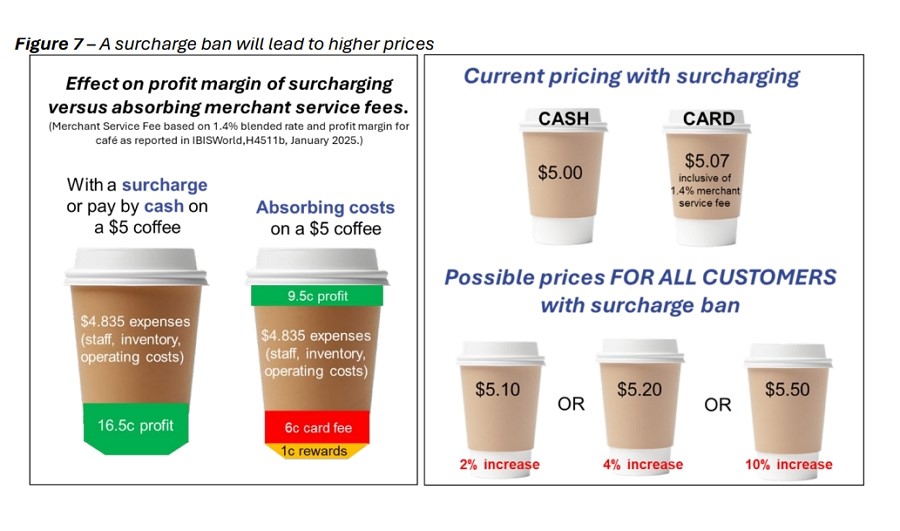
The government is set to deliver on its promise to ban merchant surcharges on EFTPOS transactions. What else happens here is unclear, but given the widespread parliamentary support for this move, it is almost sure to pass into law. While this may seem like a win for consumers, it places a significant operational burden squarely on retailers.
The Merchant fees typically range from 0.5% to over 1.5%, and are a real cost of doing business. Surcharging has been the mechanism to pass this cost directly to customers who opt for card payments. If the government bans this practice, these costs don't simply vanish. Instead, the financial responsibility shifts entirely back to the retailer. To maintain their profit margins, they will have no choice but to incorporate these fees into their product prices.
The Repricing Nightmare
It leads directly to the core of the problem if surcharges are banned, every single item in the shop will need to be repriced.
For even a small retail shop with thousands of individual items, this is not a simple task of simply updating its POS System. It means physically going through the entire inventory, calculating new prices for each product, printing new labels, and replacing every price sticker on your shelves. It would be about three intense working days for a typical small business.
Strategic Timing is Everything
The most practical and least disruptive time for a retailer to undertake such a massive task is during the annual stocktaking.
Stocktake Synergy
Most retailers conduct a full stocktake at the end of the financial year for accounting and tax purposes. This process already involves physically handling and accounting for every item in the store. You could re-sticker a new price at the same time. By combining this repricing project with your annual stocktake, you can achieve an efficiency gain.
Maximising Efficiency
Carrying this out at any other time of the year would require a second, out-of-cycle stocktake. It would, as such, double the workload. While this combined approach doesn't eliminate the extra work, it could reduce the overall time needed. A standard three-day stocktake might stretch to five days to cover the repricing and relabelling, saving you a day of work.
Conclusion
If this ban goes through, the implementation date is set for the start of the financial year. Allowing these price adjustments to be made while a stocktake is already underway is the least destructive and most logical approach for retailers.
Written by:

Bernard Zimmermann is the founding director of POS Solutions, a leading point-of-sale system company with 45 years of industry experience, now retired and seeking new opportunities. He consults with various organisations, from small businesses to large retailers and government institutions. Bernard is passionate about helping companies optimise their operations through innovative POS technology and enabling seamless customer experiences through effective software solutions.


